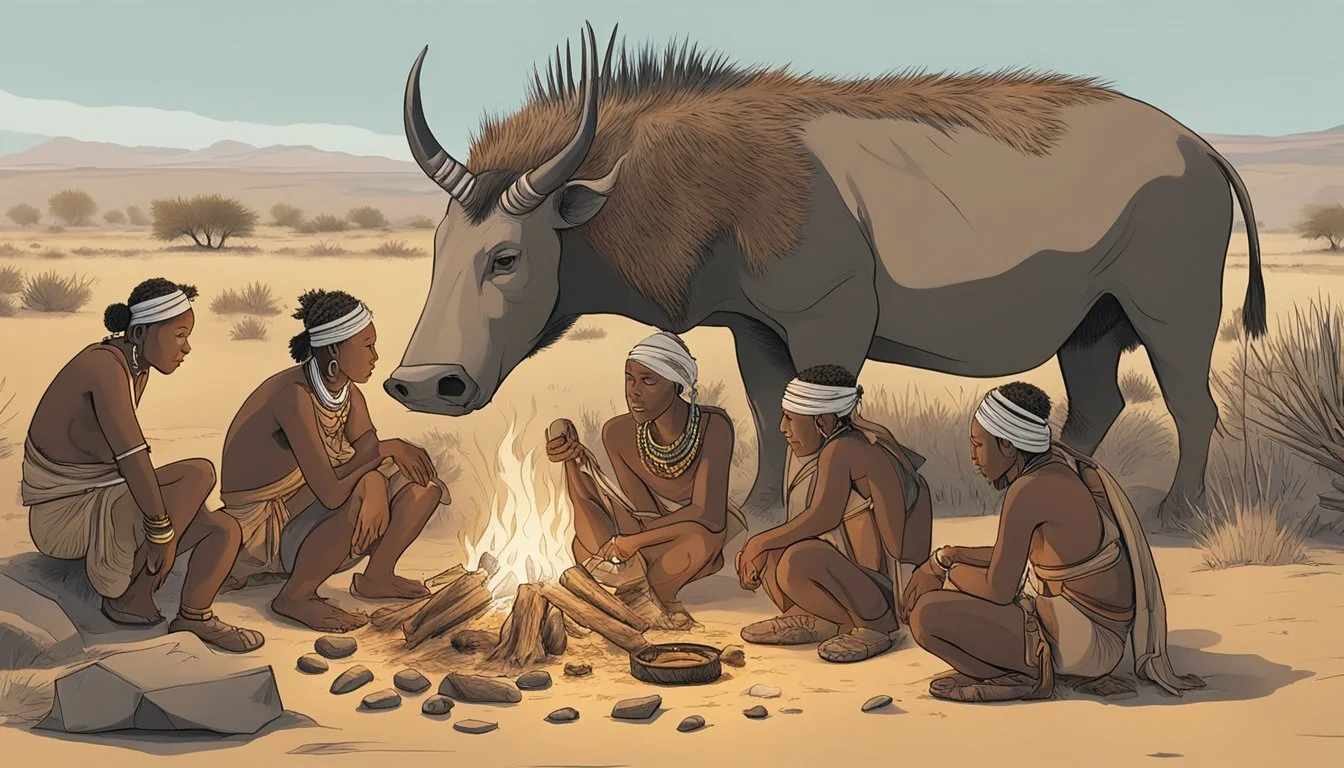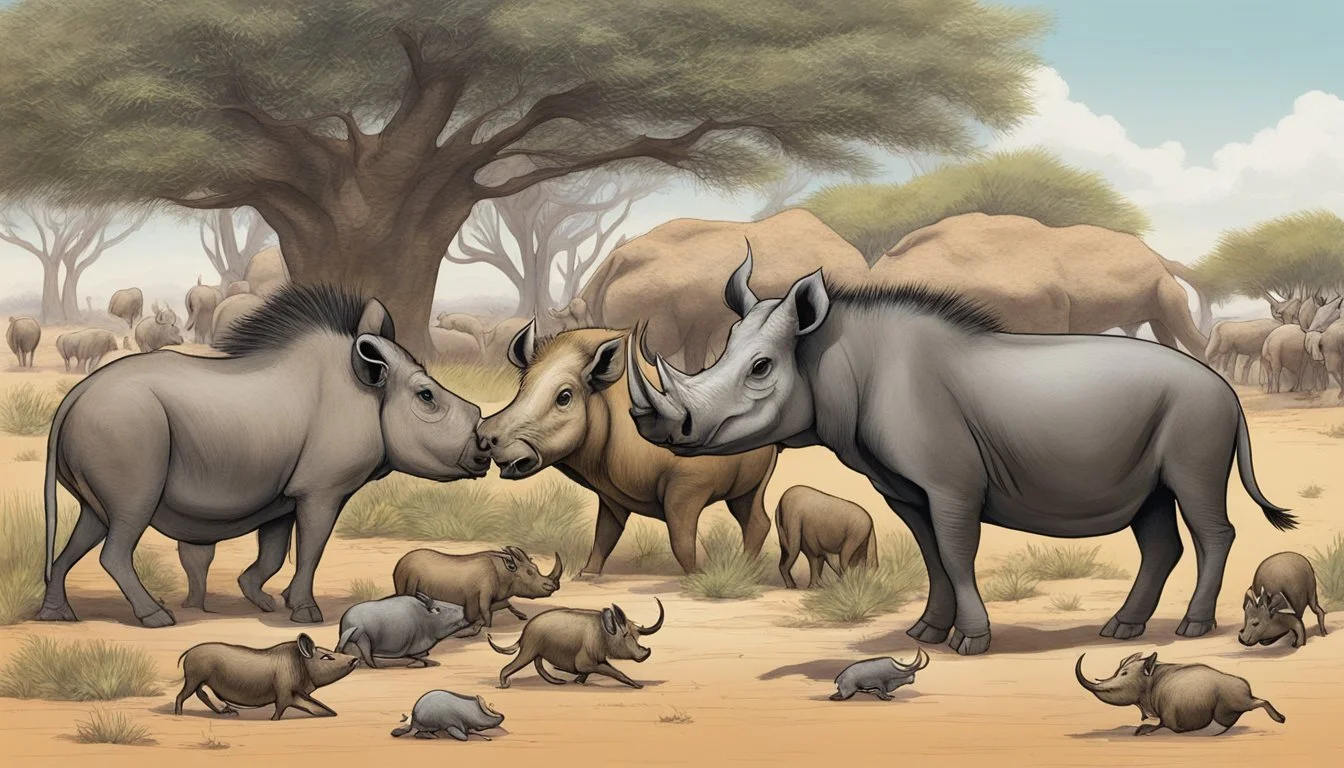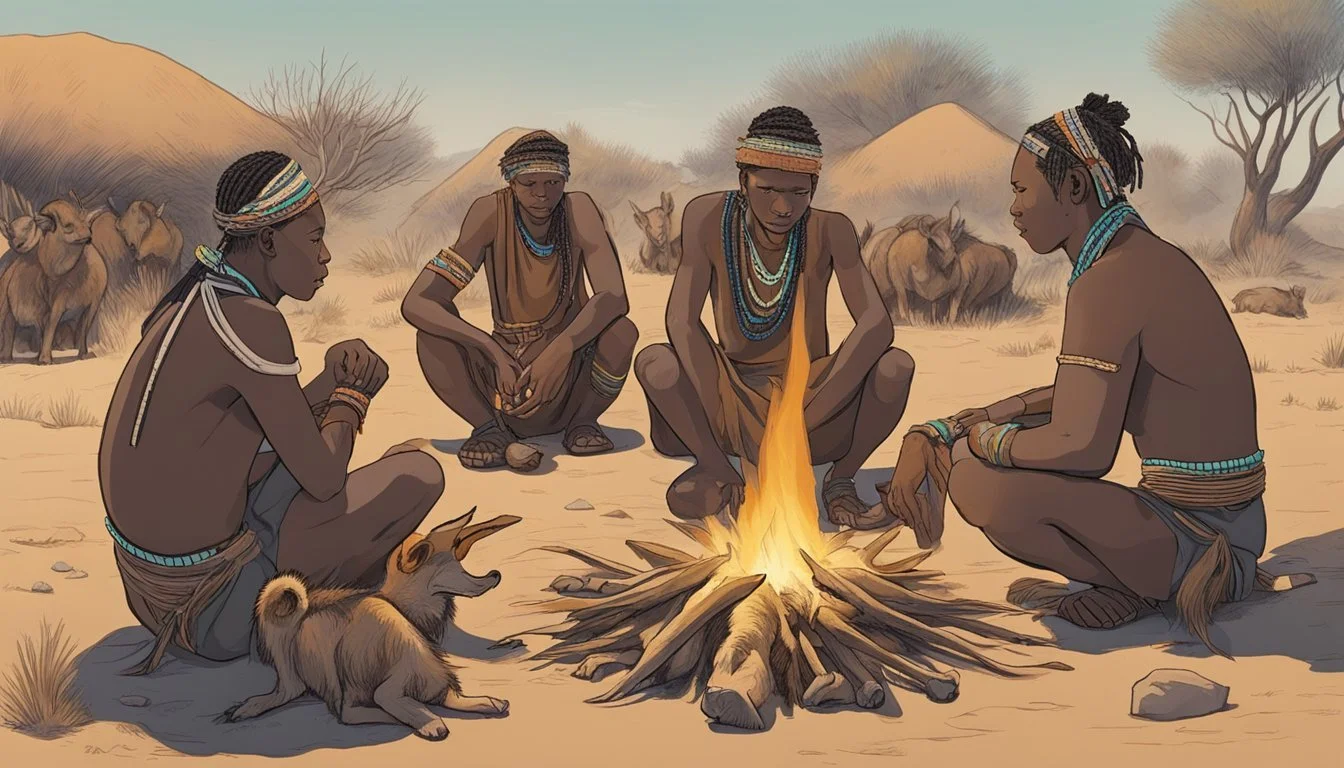Warthog Anus Unveiling the San People's Unique Culinary Tradition
The culinary traditions of Africa are as diverse and complex as its vast landscapes and myriad cultures. Within this rich food tapestry, an unusual delicacy stands out, particularly among the San people, a group renowned for their deep connection to the land and ancient hunting practices. Warthog anus is considered a rare specialty, one that might seem unconventional to the uninitiated but holds a place of respect in the bushmeat cuisine of some African communities.
The preparation of warthog anus is as straightforward and unembellished as the lifestyle of the San people, who are among the oldest inhabitants of Southern Africa. Their survival skills, perfected over millennia, include the art of utilizing every part of an animal. In this spirit, the warthog's anus is carefully extracted, along with a length of intestine, and it is traditionally cooked without water to preserve its unique flavor.
While warthog anus may not feature prominently in the daily diet of the San people or across Africa, it emerges as a culinary curiosity demonstrating the San's exceptional sustainable practices and respect for natural resources. The consumption of such a delicacy illustrates the profound understanding that everything provided by the land has its use and value, reflecting a deeper ethos of life where nothing is taken for granted.
Warthog Overview
The warthog is a resilient and distinctive member of the Suidae family found across Sub-Saharan Africa. This article focuses on essential aspects of warthog biology, from physical traits to behavior, highlighting their classification and interactions with humans.
Anatomical Features
Warthogs possess distinctive head protuberances that resemble warts but are actually bone and cartilage. These serve as fat reserves and play a role in mating displays. Males have two pairs, while females have one. Their tusks, elongated canine teeth, are not only a defense mechanism but also assist in digging for food. A mane of hair runs along the spine to the middle of the back, and their tail, with a tuft of hair on the end, stands erect when they run.
Species Classification
The two main warthog species are the Common Warthog (Phacochoerus africanus) and the Desert Warthog (Phacochoerus aethiopicus). These species are further divided into subspecies based on geographical distribution and physical characteristics.
Habitat and Distribution
Warthogs favor savannahs, woodlands, and grasslands across Sub-Saharan Africa, which include countries like Kenya and South Africa. Adapted to a range of environments, they can live in arid zones as well as more verdant areas.
Diet and Foraging
Their diet is primarily herbivorous, consuming roots, plants, and occasionally small animals. Warthogs engage in grazing and digging, using their snouts and tusks to uncover meals, often kneeling on their padded front knees.
Social Structure and Behavior
Warthogs live in sounders typically composed of females and their piglets. Males are generally solitary or live in bachelor groups. They display complex behaviors, including allosuckling, where females nurse non-related young.
Reproduction and Lifecycle
Following a gestation period of about six months, females usually give birth to a litter of up to four piglets. The family unit is important for the survival of the young, with piglets often staying within the sounder.
Conservation Status
Classified by the IUCN as a species of 'Least Concern,' warthogs are not currently endangered. However, they face threats from hunting and habitat destruction by farmers.
Interaction with Humans
Warthogs occasionally come into conflict with humans when they damage croplands. They are also popular among safari-goers and can be seen in African parks. Responsible travelers view warthogs as symbols of the wilderness and play a role in their conservation by supporting eco-tourism initiatives.
Warthog Anus in San Cuisine
Warthog anus has garnered attention as both a traditional delicacy in San cuisine and a point of interest in the realm of exotic foods. This particular dish is deeply embedded in the cultural and culinary practices of the San people of Southern Africa.
Culinary Significance
The warthog anus is prized among the San, also known as the Bushmen, for its distinct taste and the skill required to prepare it. Seen as a delicacy, its consumption is usually reserved for special occasions and is not part of the daily diet. Anthony Bourdain, the late celebrity chef, brought international attention to this unusual dish during his travels, further marking its place as a significant part of traditional cuisine.
Preparation Methods
The traditional preparation of warthog anus is quite elaborate:
Gutting: Hunters carefully gut the caught warthog to avoid damaging the intestine.
Removal: The anus along with the last foot of intestine is extracted.
Cleaning: Feces are squeezed out, yet the intestine is not washed to retain its flavor.
Cooking: It is then cooked directly over an open fire until it reaches an al dente texture.
Cultural Practices and Beliefs
In San communities, the preparation and consumption of warthog anus are tied to age-old beliefs. To them, every part of the hunted animal is valuable and nothing should go to waste. This approach reflects deep respect for the animal, and responsible travelers seeking to partake in this dish are encouraged to understand and honor these cultural nuances.
Modern Perception and Consumption
While still relatively uncommon in mainstream cuisine, warthog anus is sometimes offered as a challenging but authentic experience for adventurous diners. Its appeal lies in its connection to traditional practices rather than its flavor profile alone.
Health and Nutrition Aspects
Warthog meat, including the anus, is a source of protein. However, due to the unconventional preparation, diners are often wary. Despite this caution, the cooking method is thought to preserve the meat's nutritional value.
Sustainability and Ethical Considerations
Sustainability is central to San hunting traditions. The warthog is not an endangered species, but sustainable cooking methods are paramount to maintain an ecological balance. The San's utilization of the whole animal aligns with contemporary ethical considerations, reflecting a low-waste approach that is increasingly acknowledged and respected in culinary circles.
Warthog Interaction with Other Species
Warthogs, as a part of the Suidae family, interact with their environment and various species through unique survival strategies and specific behaviors in different habitats, such as savannahs, woodlands, and grasslands. They engage in predation and survival strategies, form symbiotic relationships, compete for resources, and have a marked impact on their ecosystem.
Predation and Survival Strategies
Warthogs are prey for several larger predators, including leopards, which are key adversaries in the wild. To escape predators, warthogs can run at considerable speeds, making them more challenging to catch. They have also developed the use of burrows for protection, often taking over those abandoned by aardvarks or enlarging them to fit their needs, which are crucial for their survival. Additionally, they leverage their size and digging abilities to create or modify these refuges.
Symbiotic Relationships
In their habitats, warthogs engage in beneficial symbiotic relationships, particularly with birds such as oxpeckers and other basking birds. These birds feed on parasites found on the warthogs' skin, providing a cleaning service while obtaining food in the process. This interaction exemplifies mutualism, where both species gain from the relationship.
Competition and Territorial Conflicts
Warthogs experience competition for resources with other species that share their grazing and digging habits, such as eland and boars. Territorial conflicts can arise, mostly among male warthogs, which may involve fights using their tusks. The competition extends not only to other warthogs but also to similar sized Suidae members within the same habitats.
Impact on Ecosystem
Warthogs play a crucial role in the ecosystem due to their grazing and digging behavior. Their foraging methods help cycle nutrients and aerate the soil, which benefits the overall health of the savannah and grasslands. By their interaction with the flora and fauna, they contribute indirectly to the biodiversity of their environment.
Warthog Anatomy and Physiology
Warthogs are distinguished by several unique anatomical and physiological traits that have evolved to adapt them to their habitat in sub-Saharan Africa. These animals are notably recognized for their prominent tusks and facial structures, as well as their ability to cope with arid climate conditions.
Structural Adaptations
Tusks: The outwardly curved tusks of warthogs are elongated upper canine teeth, which can serve for defense and digging. The tusks sharpen against the lower canines each time the mouth is opened and closed.
Snout: Their elongated snouts are adapted for ground foraging, highly effective in rooting for food beneath the surface.
Warts: Contrary to their name, the 'warts' on a warthog's face are not soft tissue but are comprised of bone and cartilage. Males have larger and more prominent 'warts'.
Mane: A characteristic mane runs along the spine, ending in a tuft on the tail, which is held erect when the animal runs.
Reproductive Anatomy
Gestation: Warthogs have a gestation period of about six months, after which litters typically comprise two to four piglets.
Digestive System
Diet: These creatures consume a mixed diet, but primarily feed on grasses, roots, berries, and occasionally small animals.
Gut: They have a simple stomach but a relatively long gut, enabling efficient digestion of fibrous plant material.
Skeletal and Muscular System
Bone: The warthog's skeletal structure is robust, with adaptations for digging, such as a strong skull and modified limb muscles.
The muscular system, combined with the animal’s stout form, aids in both digging for food and rapid escape from predators.
Economic Importance of Warthogs
Warthogs hold significant economic value in parts of Africa, particularly as targets for game hunting and as a part of agricultural ecosystems. They also contribute to cultural heritage and tourism, adding economic layers to their ecological role.
Warthog as Game and Trophy
Warthogs are a key species in the hunting and safari activities within Southern Africa. Hunters from around the world come to Africa seeking the unique experience of hunting wild game, with warthogs serving as one of the animals hunted for both trophies and meat. The economic chain includes professional hunter fees, licensing, and accommodation, all contributing to local and regional economies. They are widely sought after for their ivory tusks as well as heads, which are often mounted as trophies.
Hunting contributions:
Professional hunter fees
Accommodations and services
Licensing and permitting fees
Role in Agriculture and Farming
Warthogs impact agriculture both negatively and positively. As omnivores related to pigs and hogs, warthogs can sometimes become nuisances to farmers by damaging crops and competing with livestock for food. Conversely, they can benefit ecosystems by controlling insect populations, serving as a natural form of pest management. Responsible management of warthog populations is crucial in maintaining balance within agricultural environments.
Agricultural impact:
Pest control
Competition with domestic livestock
Cultural Impact and Tourism
The San people, also known as Bushmen, consider the warthog an important part of their diet and cultural practices. This traditional aspect can attract responsible travellers who are interested in authentic cultural experiences. Warthogs are an integral part of wildlife safaris that showcase the biodiversity of regions such as Southern Africa. Revenue generated from tourism not only supports local economies but also helps fund conservation efforts.
Tourism benefits:
Interest in traditional San cuisine and practices
Safari and guided wildlife experiences
Conservation funding through ecotourism programs
Conclusion
The preparation of warthog anus by the San people highlights a unique aspect of their dietary practices. This particular dish, while may seem unconventional to outsiders, underscores the resourcefulness and adaptability of indigenous African communities. The San people, who have thrived in Southern Africa for millennia, have developed methods to utilize every part of the animals they hunt, reflecting a deep respect for the natural resources provided by their environment.
Warthog, as a species, plays a role in both the ecology and culture of Africa. While not currently listed as endangered, ongoing habitat loss and hunting can pose risks to their population. The sustainable practices of the San people in utilizing warthogs can serve as an important model for conservation.
It's imperative that cultural traditions around wildlife be understood in the context of conservation. The practices of the San people, including their consumption of warthog anus, are integral to their cultural identity and subsistence. The intersection of culture and conservation thus presents a complex picture that requires nuanced understanding and respect.
Relevant information about the entities:
Warthog: A common wild pig in Africa.
San People: An indigenous group known for their hunter-gatherer lifestyle.
Africa: The continent where both the San people and warthogs are native.
Conservation Status: The importance of integrating traditional practices with wildlife conservation efforts.
The preservation of such culinary traditions must be balanced with the efforts to maintain biodiversity and environmental integrity on the African continent. It is in understanding and respecting these practices that effective and collaborative conservation strategies can be developed.








